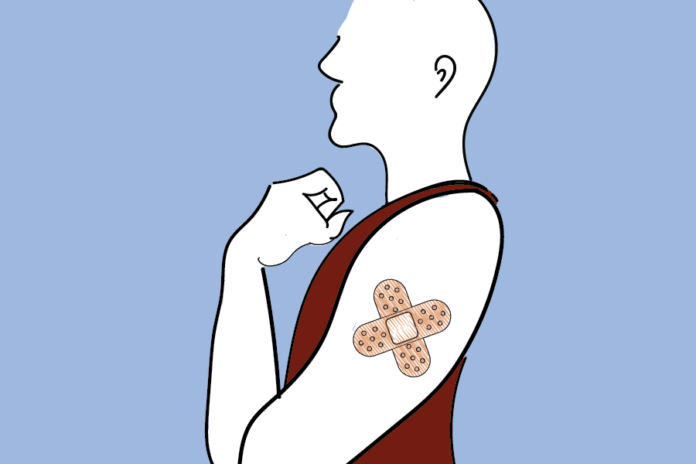UC Davis Mouse Biology Program collaborates with biopharmaceutical company by conducting animal trials
Imagine being able to receive a vaccine through the mail in the form of a transdermal patch instead of an injection at the doctor’s office. Verndari Inc., a biopharmaceutical company dedicated to modernizing vaccine development and delivery, is currently making advances toward this possibility with the help of UC Davis facilities. The company recently announced that they will begin testing their patch delivery system in collaboration with UC Davis’ Mouse Biology Program in the first steps of developing a potential COVID-19 vaccine.
Daniel Henderson, the chief executive of Verndari Inc., initially began testing his designs for the Verndari’s VaxiPatch, a skin patch vaccine delivery system. The skin patch vaccine, for the flu, was a collaboration with UC Davis’ Department of Bioengineering in 2016.
“We hope it can really transform the way we think about vaccines because if we could make them room temperature stable, we could ship them all over the world,” Henderson said. “If we make it something that is easy to apply, [it’s] potentially something we could self-apply.”
After developing flu vaccines to apply to the microneedles on the patch, preclinical testing began with the Mouse Biology Program. This led to promising results in early December of 2019. As COVID-19 became a more prominent threat, the company switched its focus from developing a flu vaccine to addressing the pandemic issue at hand.
The Mouse Biology Program’s role in this preclinical testing consists of looking at the vaccine’s ability to move from the transdermal patch into the body, according to Kristin Grimsrud, the associate director of vivaria and veterinary care at the Mouse Biology Program. In addition, they will be making sure the body can recognize the antigens part of the vaccine and build antibodies against it. They hope to optimize the technology of this patch vaccine in order to achieve the same, if not better, results compared to an injectable vaccine.
Grimsrud explained that the FDA requires these animal trials prior to human clinical
trials in order to show the vaccine’s safety and efficacy. In other words, animal models are a tool used to make sure there are no adverse effects associated with the vaccine and that humans will be able to benefit from it.
“Before you move [the vaccine] into the human, […] you need to work in multiple animal models, which takes time, to show that not only were you able to show that it’s safe, but that in the event that that individual got infected, it stopped the infection from causing a clinical disease or at least reduced the clinical symptoms,” Grimsrud said.
Once the rat models prove the vaccine’s safety and efficacy, larger animal models, such as non-human primate (NHP) models, will be used to demonstrate the vaccine’s ability to prevent severe diseases. The California National Primate Research Center (CNPRC) helps with providing these NHP models.
“Vaccine immunogenicity and efficacy outcomes in NHPs are more likely to predict outcomes in humans relative to small animal models, making the NHP model a very powerful model for studies centered around COVID-19,” said Smita Iyer, an assistant professor and core scientist at the infectious disease unit at the CNPRC, via email.
The CNPRC has the rhesus macaque, or NHP, model of COVID-19 along with the animal approval protocols in place and ready to start testing once Verndari Inc. is satisfied with the results of the rat studies, according to Iyer. In the meantime, the Mouse Biology Program is taking an active role in collaborating with Verndari Inc. by brainstorming prototypes and offering intellectual insight rather than solely conducting tests, stated Grimsrud.
“We really like that nice partnership and friendship we’ve built with [Verndari Inc.] over the years, and we’re just really proud of the work they’ve achieved,” Grimsrud said. “Often we don’t get to talk about what we do in animal research and so it’s exciting that we actually do get to talk a little bit about what we do and have others know about it as well so they can value the animals that have contributed to the research as well.”
Written by: Michelle Wong — science@theaggie.org





